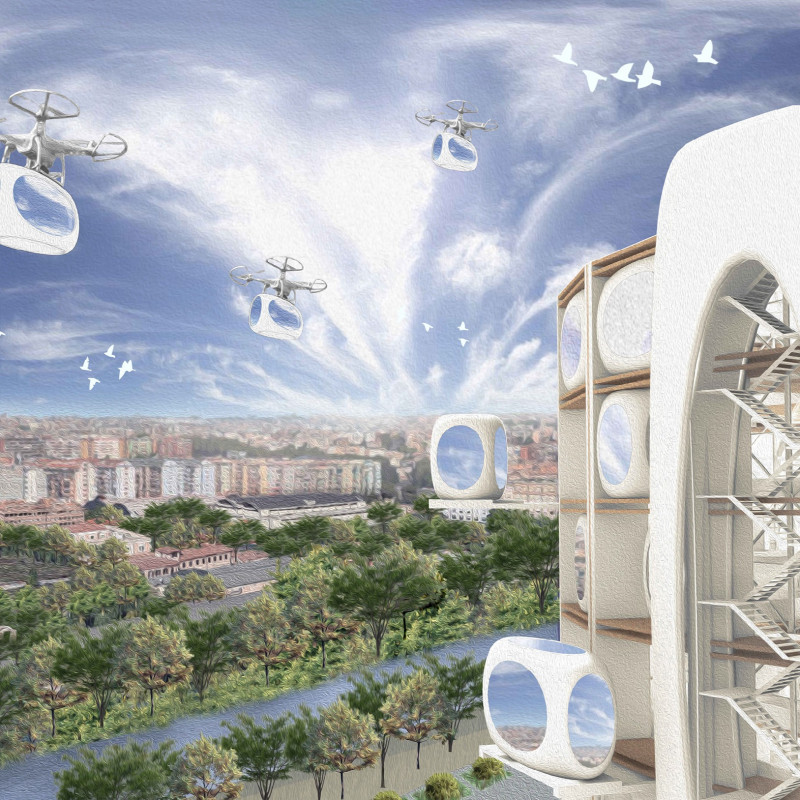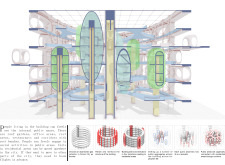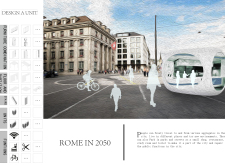5 key facts about this project
The project located in Rome offers a new approach to urban living designed for young residents. It emphasizes flexibility and movement, enabling people to immerse themselves in different experiences throughout the city. Several large and small sites have been created, allowing modular living units that can be moved according to individual needs. This design encourages adaptation and interaction, playing a part in revitalizing the historical urban landscape.
Design Concept
The primary idea behind the design is mobility. Each modular residential unit is equipped with a moving device that allows it to detach and travel to various locations in the city. When it is time to relocate, the device extends, enabling the unit to connect with aerial transport. Once it reaches its new site, the device retracts, transforming the remaining area into a balcony. This flexibility promotes both personal choice and connection to the surrounding community.
Public Engagement
Public spaces play a vital role in the overall scheme. They are designed to foster social interactions among residents. Areas such as roof gardens, dining spots, and workspaces are included to facilitate communal activities. Corridors link these public areas to the living units, ensuring easy access and encouraging a sense of community among the residents. This arrangement enhances the lived experience and reinforces social ties.
Site Integration
An important aspect of the design is its relationship with the surroundings. The project reuses an abandoned gas collector, preserving its existing structure while incorporating new elements. Stairs and elevators connect various levels, providing access to both public and private spaces. This integration creates pathways for movement and interaction, enhancing the overall livability of the location.
Architectural Detail
The focus on adaptability within the historical context of Rome allows for a fresh take on modern living. By prioritizing functionality alongside visual harmony, the design reshapes how urban residents experience their environment. The commitment to creating a framework that allows for personal expression and community engagement stands out, making urban life more vibrant and connected.





















































